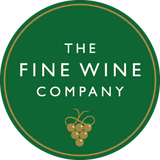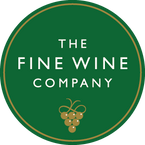Want to enjoy a glass of wine without worrying about extra calories? More and more wine lovers are looking for healthier options that fit into their lifestyle
The good news? You don’t have to give up on taste to cut down on calories. There are plenty of low-calorie wines that let you enjoy every sip guilt-free.
If you’re counting calories, reducing sugar, or simply trying to make smart choices, this guide takes the guesswork out of finding the best low-calorie wines for every taste and occasion.
Why Choose Low-Calorie Wine? Health, Enjoyment, and Balance?
A classic glass of wine can range from just over 80 calories to more than 230. Many factors affect this: alcohol by volume (ABV), residual sugar, grape type, and serving size. Choosing a lower-calorie option supports:
• Weight management and diet plans;
• Reduced sugar intake for diabetics or anyone watching their carbs; and
• Lower alcohol consumption for a lighter, more mindful drinking experience.
When searching for low-calorie wines, key factors to look at include the wine’s ABV (aim for 9-12%), dryness (drier equals fewer residual sugars), and whether it’s red, white, rose, or sparkling.
The Calorie Equation: What Makes a Wine Low-Calorie?
In most wines:
• Alcohol is the largest contributor to calories. Higher ABV = more calories.
• Sugar adds extra calories, especially in sweet styles.
• Serving size: A standard glass is 125–150ml (about 5oz), but pours can be larger.
On average, low-calorie wines clock in at 83–125 calories per 125ml/5oz glass, lower than many “regular” bottles.
Pro tip: Non-alcoholic wines, ultra-light (6-9% ABV), and the driest styles score best for calorie savings.
Best Low-Calorie White Wines
White wines often offer the leanest calorie profiles, especially dry varieties like Sauvignon Blanc, Pinot Grigio, and certain Rieslings.

|
Wine |
Avg. Calories (125ml) |
Notable Features |
|
83–100 |
Dry, crisp, classic citrus/herbal palate, light |
|
|
79–120 |
Refreshing, low-sugar, vegan-friendly |
|
|
Riesling (dry/off-dry) |
84–120 |
Lower ABV (8–10%), often beautifully aromatic |
|
105–123 |
Fresh or lightly oaked, choose unoaked for lighter |
|
|
90–105 |
Slightly spritzy, very low alcohol (“green wine”) |
• Piattini Pinot Grigio: 79 calories per glass, no sugar, vegan.
• Tesco Finest English White: 78 calories, 11.5% ABV, crisp and fruity.
• Dry Riesling: Under 90 calories in lower ABV styles.
Light and food-friendly, these white wines make excellent warm-weather or lunch choices, particularly if you want options that won’t weigh you down.
Best Low-Calorie Red Wines
If your heart belongs to reds, you’re still in luck. Opt for lighter-bodied reds, especially those naturally lower in alcohol and tannin.

|
Wine |
Avg. Calories (125ml) |
Notable Features |
|
110–126 |
Delicate, red fruit, high in resveratrol, “healthy” |
|
|
109 |
Rare, fresh acidity, fruit-driven |
|
|
115 |
Juicy “Beaujolais” red, usually 10% ABV |
|
|
120–123 |
Smooth and moderate ABV |
|
|
120–123 |
Classic, dry, best in lighter styles |
• Pinot Noir is repeatedly named one of the healthiest, lowest-calorie reds, high in antioxidants and low in sugar.
• Merlot and Cabernet Sauvignon are also solid “healthier” choices, but look for bottles under 12.5% ABV for best results.
Want reds that work with your health-conscious lifestyle? Pinot Noir or a fresh Gamay can shine at happy hour, barbecues, or even brunch.
Best Low-Calorie Rose Wines
Rose typically merges the leaner qualities of white and red: lowish ABV, fresh acidity, and modest calories.

|
Wine |
Avg. Calories (125ml) |
Notable Features |
|
80–110 |
Classic dry style, low sugar |
|
|
Sparkling Rose (non-alc) |
19 |
Bubbly and light |
|
85–110 |
Fresh, fruit-forward, usually dry |
• Oddbird Sparkling Rose: 19 calories per glass, 0% ABV, great for celebrations minus guilt.
Best Low-Calorie Sparkling Wines
Love bubbles? You don’t have to give them up to stay healthy.
|
Wine |
Avg. Calories (125ml) |
Special Notes |
|
Prosecco (Dry/Brut) |
60–90 |
Lower alcohol than most reds, dry |
|
80–95 |
Dryest style, fewer calories |
|
|
75–95 |
Spanish sparkler, traditionally made |
|
|
Non-Alcoholic Sparkling |
9–25 |
Marketed for ultra-light lifestyles |
• Brut Prosecco: About 80 calories and very low sugar per glass.
• Brut Champagne: Choose bone-dry (brut nature, extra brut) for fewer carbs.
For more on sparkling wine comparisons and picking the right bottle, check expert advice on what sets Prosecco apart from Champagne, and why it matters for calorie-watchers.
Wine Buying Tips: Reading Labels and Picking the Right Bottles
• Check the ABV: Lower alcohol = fewer calories. 9-12% is a healthy target.
• Look for terms like “Brut,” “Dry,” “Sec” or “Trocken” (on German wines): Signifies reduced sugar.
• Avoid “Demi-Sec,” “Late Harvest,” or “Dessert” labels: These have higher sugar and more calories.
• Read calorie and sugar details: Newer labels and some vendors now provide nutrition facts online.
• Look for “no added sugar” or “zero sugar” mentions.
• Pick wines made for health: Some brands (like FitVine, Skinnygirl) are designed for calorie-conscious siping.
Why Do Calories in Wine Matter For a Healthy Lifestyle?
Mindful drinking is about making every glass count, choosing quality over quantity. Lower-calorie options:
• Support healthy weight management.
• Reduce the risk of sugar spikes for people with diabetes.
• Enable you to enjoy a drink without guilt or sacrificing diet goals.
Frequently Asked Questions: Low-Calorie Wines & Healthy Drinking
Q. Which wine has the lowest calories?
A. Typically, dry sparkling wines, Pinot Grigio, Sauvignon Blanc, and dry rose. Brut Champagne and Prosecco also rate among the lowest per glass.
Q. Is red wine or white wine better for weight loss?
A. Both offer low-calorie possibilities, but dry whites (Pinot Grigio, Sauvignon Blanc) and light reds (Pinot Noir) are best bets. Red wines offer higher antioxidants which are also beneficial.
Q. Are low-alcohol wines always low in calories?
A. Not always, but most wines under 12% ABV tend to be lower in calories, especially if “dry” or “brut” is on the label.
Q. How many calories are in a glass of Prosecco?
A. On average, a glass of dry Prosecco contains about 80 calories, making it a lighter sparkling choice.
Q. What about no-alcohol wines?
A. Non-alcoholic wines have the fewest calories, often below 20 per glass, and are best for those wanting similar taste without alcohol.
Q. Does organic or natural mean low-calorie?
A. Not automatically, but many natural or organic wines (and especially those labeled “biodynamic”) tend to have lower sugar and alcohol.
The Best Bottles for Balanced Living
Low-calorie wines are a smart, delicious part of a balanced lifestyle. From bright Pinot Grigio and energetic Sauvignon Blanc to silky Pinot Noir and cheerful Brut Prosecco, healthy sipping is available in every style and for every palate.
Check out the latest selection at The Fine Wine Company, where every bottle is carefully chosen for quality, taste, and fit for today’s mindful drinkers.
Check out our top picks and trusted collections to find out your next delicious wines that suit both your taste buds and your health goals.



